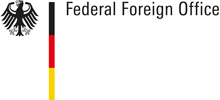Germany lies in the heart of Europe and is a cosmopolitan, democratic country with a long-standing tradition and a lively, culturally diverse present. Germany offers an innovative research and education landscape. It has a strong creative economy and a dynamic cultural scene. Germany is the European Union’s most populous country with 82 million inhabitants. German society is marked by a pluralism of lifestyles and a diversity of cultures.
History
Historical schisms mark Germany’s path towards constitutional democracy and a functioning parliamentary system: They include the failure of the March Revolution (1848) and the Weimar Republic (1919–1933), but, above all, the upheaval of National Socialism, Holocaust and the Second World War (1933–1945). One of the consequences of the Second World War was the division of Germany into the Federal Republic of Germany and the German Democratic Republic (GDR). The peaceful revolution by the people of the GDR only brought down the Wall in 1989. The Two Plus Four Treaty with the victorious powers of the Second World War cleared the path for German reunification on 3 October 1990 and is since 2012 part of UNESCO’s Memory of the World Register.
Political System
Since 1949 the Federal Republic of Germany has been a democratic parliamentary federation consisting today of 16 Länder (states), each with its own constitution, parliament and government. The highest government authority lies with the federation. Germany supports peace, democracy and human rights as well as environmental and climate protection worldwide in cooperation with its European and transatlantic partners. The Federal Republic of Germany is a founding member state of the European Union (EU) and has been a full member of the United Nations (UN) since 1973.
Geography and Climate
Germany is surrounded by nine neighbouring countries: It is bordering Denmark to the north, Poland and the Czech Republic to the east, Austria and Switzerland to the south, France and Luxembourg to the southwest, and Belgium and the Netherlands to the northwest.
Germany stretches from the North Sea and the Baltic Sea in the north to the Alps in the south. Some of the largest European rivers – the Rhine, the Danube and the Elbe – flow through Germany. Most of Germany has a temperate seasonal climate in which humid westerly winds predominate. The country is situated in between the oceanic Western European and the continental Eastern European climate. Tempertures in June and July may range from 15 to 30 °C. Rainfall and occasional thunderstorms can occur druring these months.
Source: Facts about Germany







